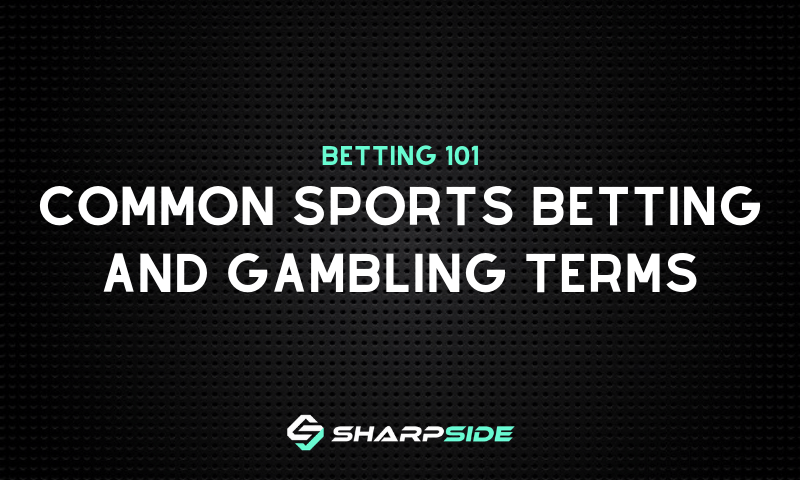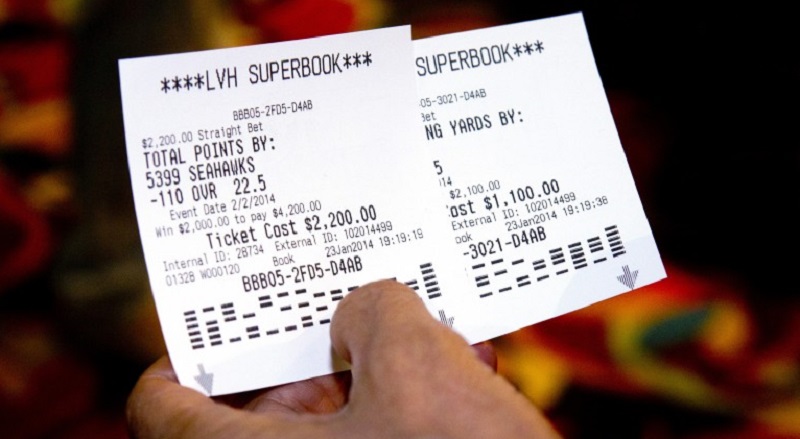Moneyline Betting Explained
Betting point spreads come in handy if you're confident in favorites pulling off a blowout, regardless of what the game line actually says. In our hypothetical game, if you think the Chiefs are going to handily beat the Patriots, it makes sense to take Kansas City at -3.5 rather than taking their moneyline. Whereas a typical moneyline bet involves a bet on one of two options, three-way moneyline betting involves three options. When wagering on a three-way moneyline, you can bet either Team A to win, Team B to win, or for the event to end in a tie (sometimes referred to as a ‘draw’).
In the world of sports betting, a money line bet is simply betting on which team you expect to win. It doesn’t have anything to do with a spread. You may also see a money line bet listed as “Money Line” or “ML” in different spaces.

Money lines are represented in negative and positive values.
Negative money line: -145, -220, or anything similar
When you see a minus (-) sign in front of a price, it shows you that team is the favorite to win the game.
That number also indicates how much money you need to bet/spend in order to win $100.
For example, a -220 money line means you need to bet $220 in order to win $100 provided the team you bet on actually does win.
Heavy favorites are known in sports betting as a “chalk” pick. A heavy favorite usually has a number pushing +300 or more. Here, you’re wagering a lot on the favorite to win a little. Don’t assume that a heavy favorite, or chalk pick, is a guaranteed winner…
Positive money line: +145, +220, or anything similar
When you see a plus (+) sign in front of a price, it shows you that team is the underdog. Higher numbers like +400, +500, +5000, etc. represent how much of an underdog the team is in the game. The higher the number the more likely the team is expected to lose in the eyes of the oddsmakers.
The number also indicates how much money would win in comparison to every $100 you wager.

For example, a +150 money line means you would win $150 for each $100 wager you place should that team win the game.
Money line examples:

Lets use an NFL example here:
New England Patriots -240
Miami Dolphins +220
To bet the New England Patriots to win on the money line, you would need to spend $240 on the bet for a chance to win $100 if the Patriots beat the Dolphins. Your return would be $340 – the original $240 stake (bet) and the $100 bet profit.

To bet the Miami Dolphins to win on the money line, you would spend $100 on the bet for a chance to win $220 if the Dolphins, as the underdog, beat the Patriots. Your return would be $320 – the original $100 stake (bet) and the $220 profit.
In both situations, it doesn’t matter if the team you bet on wins by one point or 100 points. You’re purely betting on the team you believe will win the game. As Al Davis said, “Just win, baby.” That’s exactly what you’d be looking for out of your selection. It doesn’t have to be pretty, it just has to happen or your original stake is lost.
Moneyline betting is an American term for the betting market match winner which is simply a wagering option for which team will win a match with no handicap involved. This is the most common way betting is done on baseball and hockey games and for basketball and football it is a popular alternative to point spread betting. In this article I will explain how the odds work, introduce the websites with the best odds and explain the dynamics of this form of wagering in great depth.
Moneyline Betting Calculator
Understanding Moneyline Odds
First let me explain how the odds work. The odds can be expressed as either a positive or a negative. A positive moneyline is how much profit a winning bet will pay per $100 staked. A negative moneyline is how much a player needs to stake in order to win $100. +175 means risk $100 to win $175 profit and -183 means risk $183 to win $100 profit. To calculate for other bet amounts, just change the moneyline to a decimal and multiply for positive or divide for negative. Betting $60 on +175 is risk $60 to win ($60*1.75=) $105 and staking $60 on -183 is risk $60 to win ($60/1.83=) $32.79.
Betting Moneylines Online
First, understand bookmakers make their profit (vig) by shorting positive moneylines and inflating negative moneylines. A term to be familiar with is cents. Yankees -180 / Twins +160 is said to be a 20 cent line which is referring to gap between -180 and +160. Also if one site is offering -180 and another -176 one site is said to have a 4 cent better price. A dimeline means a 10 cent line (example: -150/+140) and a nickel line (rare) means a 5 cent line (example -120 / +115). Where you bet moneylines online makes a difference. Many sites charge a lot of vig using 20+ cent lines. The sites offering better value are listed below.

- Why We Like’em
- Has point spreads priced -105 (risk $1.05 to win $1, instead of $1.10 to win $1)
- Offers a 15-25% bonus on all deposits and is highly competitive with 5Dimes for baseball and hockey moneylines.
- Offers a 50% up to $250 sign-up bonus, baseball dimeline up to -144 (.15 to -175) and many off market NFL & NBA underdogs.
Understand the websites above are best on average because they build less juice into their lines than competitors Justbet, Topbet and Bookmaker do. It is still important to shop as many betting sites as possible including the three just mentioned in seeking the best price. Line shopping is the heart of moneyline betting strategy.
Understanding the Dynamics
There’s a huge mistake many novice sports bettors make on a regular basis. I’m going to explain the dynamics of moneyline betting multiple ways in the hope you’ll firmly grasp the concept and avoid making the same mistake.
Question 1: Game 1= Bears -110 / Falcons -110. Game 2= Patriots -450 / Jaguars +350. Which of these two lines has more vig? To novice players the obvious answer is the Bears/Falcons because it is a 20 cent line as opposed to a 100 cent line. This is answer is however incorrect. The second line has less juice (vig) than the first.
Question 2: All online betting sites are offering Patriots -450 / Jaguars +350. A friend says: “I’ll offer you either Patriots -380 or Jaguars +380, which would you like?” You are only concerned with having the maximum expected value. Which wager -380 or +380 has higher expected value? Many bettors would say if the line is -450 / +350 this averages to -400 / +400, therefore -380 is the better bet. This is again wrong. -450 / +350 when vig is removed is -368 / +368! If you’re thinking: what? wait? why? you are completely lost and lack understanding of the basics. It is a good thing you found this article as I’ll explain further.
Implied Probability Explained
Understand that all moneylines have an associated implied probability, which means how often they need to win to break even. The math for calculating this is risk/return=implied probability. Return refers to stake + win. So -110 is risk $110 to win $100 and the return is $210 ($110 stake + $100 win). The math here is 110/210=0.5238 (52.38%).
Do not skip this exercise: Visit our odds converter and under required break even percentage enter 52.38%. You’ll see this is American odds -110 as just explained. Increase this figure by 1% to 53.38% and you’ll see the American odds are -114.5. This is a 4.5 cent increase.
Continuing this exercise, enter 81.82% and you’ll see this is -450. Add 1% more to make it 82.82% and you’ll see this is a -482.1. That’s a 32.1 cents difference for 1%, but above 1% was only 4.5 cents.
The lesson here is that cents are near meaningless for evaluating odds. All that matters is implied probability.
Calculating odds, VIG and EV may look difficult at first, but do 1 or 2 examples and it’s a piece of cake
How to Remove Vig
Back to question #2: again, novice bettors often make the mistake of assuming -450/+350 has a -400/+400 fair value line, which is well off. The way to calculate this is -450 has an implied probability of 81.82% and +350 has an implied probability of 22.22%. Notice these total 104.04%. The reason they are higher than 100% is the bookmaker’s advantage (vig) which we’ve already discussed.
To remove vig: divide both implied probabilities by their combined total (in this case 104.04%). 81.82%/104.04%=78.64% 22.22%/104.04%=21.36%. Notice 78.64%+21.36%=100%. This means so long as vig was divided equally, the oddsmaker determined the favorite will win 78.64% of the time leaving 21.36% of the time for the underdog. Enter these into our odds converter and you’ll see 78.64% is -368.2 and 21.36% is +368.2 in American odds format.
Originally to come up with -450/+350 the bookmaker took his starting probabilities added about 4% vig. When doing this, he couldn’t simply add 2% to the favorite and remove 2% from the underdog; he needed to do this proportional to how often each side is going to win. This meant giving 78.64% of the 4% to the favorite and taking the remainder from the underdog. Next he made some slight adjustments/rounding to get a nicer looking number, giving him -450/+350.
Calculating EV
The equation for calculating EV is (win probability * what you’ll be paid if you win) – (loss probability * amount staked)=EV. Using the same odds we’ve been discussing let me calculate the EV for each.
$100 at -450 pays ($100/4.5=) $22.22 and we know our chances of winning is the 78.64% we calculated earlier. This plugs in as (0.7864*$22.22)-(0.2136*$100)=-$3.88. As we expect to lose $3.88 per $100 stake we have a -3.88% expected return on investment (ROI). The bookmaker on average profits 3.88% of our staked amount.
$100 at +350 pays ($100*3.5=) $350 and we know our chances of winning are 21.36%. This plugs in as (0.2136*$350)-(0.7864*$100)=-3.88. Again we have same -3.88% ROI and again the bookmaker on average profits 3.88% of our staked amount.
Re-Answering Questions 1 & 2
Moneyline Betting Explained
When betting point spreads that are 50/50 propositions $100 at -110 pays $90.91. This plugs in as (0.5*90.91)-(0.50*$100)=-4.55. This here is a -4.55% ROI. As you can see, the bookmaker makes more on -110/-110 than -450/+350. Likewise, we pay less vig betting either option on a -450/+350 line than we do on either option of a -110/-110 line.
Moneyline Betting Strategy
Do you understand now why -110/-110 has move vig than -450/+350. It is really as simple as noting 1% of a big number is far more than 1% of a small number. If you did the exercise with our odds converter earlier you are already aware of how this works. There is an important lesson to take from this involving shopping large moneylines at multiple betting sites. When dealing with the favorite you need to find MUCH better price than the consensus moneyline to find a +EV bet. When dealing the underdog you need to find only a small amount better. Again for -450/+350 the no-vig lines are about -368/+368, not the -400/+400 novice bettors often believe that they are.